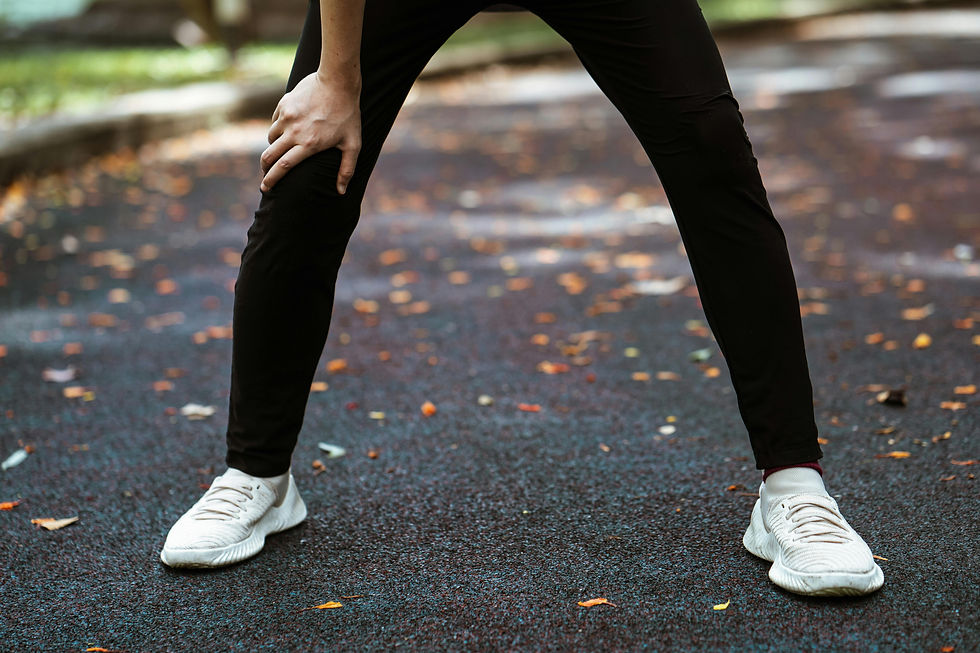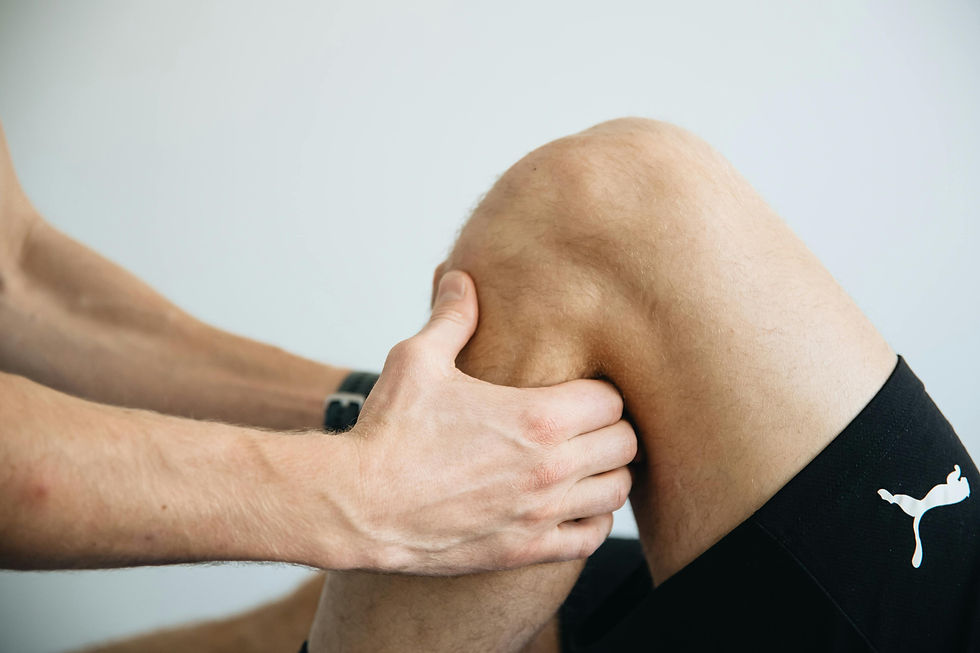Lactic Acid vs DOMS: Clearing Up the Misconception
- Rina Herenius

- Jun 26
- 3 min read

If you’ve ever pushed yourself during a workout or sports event, you will be familiar with the sharp fatigue or “burn” you experience during the event or the deep, achy soreness you feel a day or two later. Although both feel like “muscle pain” they are the result of two completely different processes. Most people believe that the soreness and stiffness experienced the following day is due to a build-up of lactic acid. However, this lingering stiffness is the result of microscopic muscle damage caused by intense or unfamiliar exercise. This is what is known as DOMS or Delayed Onset Muscle Soreness.
Let’s have a look at the difference between lactic acid build-up and DOMS and how techniques such as sports massage can help you recover faster.
Lactic Acid
Lactic Acid is a by-product of anaerobic glycolysis (the process by which muscles use glucose in the absence of oxygen to produce energy). This happens during high-intensity and short-duration activities such as sprinting and heavy lifting.
Within 30 to 60 minutes after stopping the intense exercise or activity, the body starts to break down the lactic acid. About 70% is converted back to glucose by the liver and the remaining 30% is recycled directly in the muscles or used by your heart and brain as instant fuel. Your heart loves lactic acid as a quick energy source during exercise!
A light cool-down will help clear the lactic acid faster. As you breathe deeply, oxygen will help to break down the leftover lactic acid into water and carbon-dioxide. The latter will be dispelled from your body as you exhale.
It is important to remember that lactic acid is not “bad”, it is simply a temporary fuel by-product. Elite athletes train to tolerate more lactic acid so that they can push their bodies harder and for longer.

Delayed Onset Muscle Soreness
Delayed Onset Muscle Soreness, DOMS, on the other hand is the muscle pain and stiffness that develops 24 to 72 hours after intense or unfamiliar exercise.
It is caused by microscopic muscle damage and inflammation due to eccentric (lengthening) contractions such as downhill running or lowering weights. The symptoms include reduced strength, stiffness, swelling and tenderness that can last from 3 to 7 days.
A gentle cool-down which includes walking and light stretching will help reduce the effects of DOMS. It is also important to hydrate.

Sports and Remedial Massage Therapy
Sports and Remedial Massage is very beneficial in reducing DOMS. It enhances localised circulation by delivering oxygen and nutrients to aid in the repair of damaged muscles. Increased blood flow will also help to remove metabolic waste such as inflammatory by-products.
Massage reduces muscle stiffness and tension by breaking down adhesions and relaxes tight muscle fibres, thereby improving range of motion and flexibility.
Gentle massage decreases inflammation as it modulates inflammatory responses and reduces swelling.
Massage also stimulates sensory nerves, which can override pain signals. It promotes the release of endorphins, the “feel-good” hormone that acts as a natural pain reliever.
A light massage immediately post-exercise may help, but deeper work is more beneficial 24 to 48 h ours after the event.

In conclusion, DOMS is caused by micro-tears in the muscles and not by lactic acid. Sports and Remedial Massage aids in the recovery process by improving circulation, reducing muscle stiffness, and relieving pain.

Comments